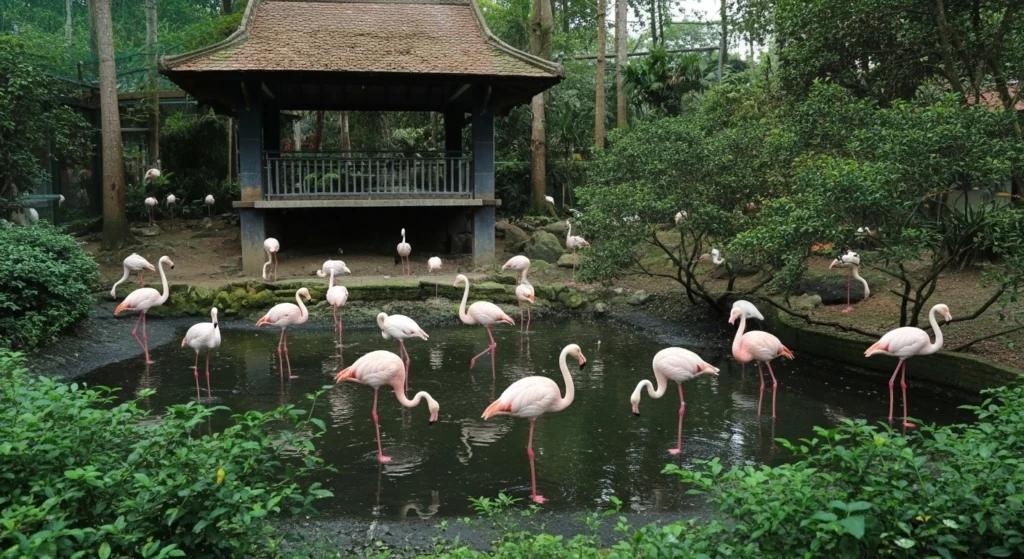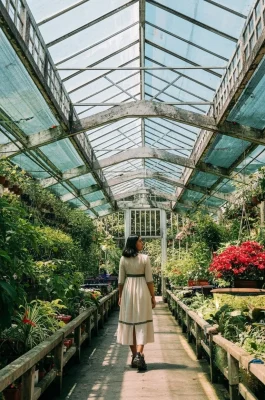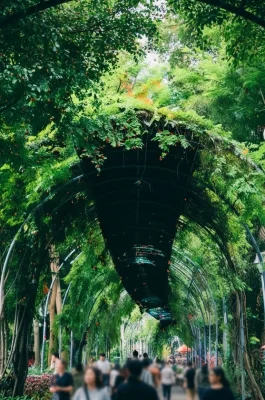Essential Guide: A Cultural and Natural Oasis in Ho Chi Minh City
The Saigon Zoo and Botanical Gardens, affectionately known to locals as Thảo Cầm Viên Sài Gòn, is one of Ho Chi Minh City’s most cherished landmarks. It’s not just a sanctuary for animals and plants, but a sprawling, 150-year-old living museum that provides a vital green escape from the city’s relentless pace.
| Practical Visitor Information | Details |
|---|---|
| Address | 2 Nguyen Binh Khiem Street, Ben Nghe Ward, District 1, Ho Chi Minh City |
| Opening Hours | Visitor Hours: 7:00 AM – 6:30 PM Daily. |
| Early Morning Access | 5:00 AM – 6:30 AM (Reserved for locals using the park for exercise/jogging). |
| Admission Fee (approx.) | Adults: 60,000 VND. Children (1.0m to 1.3m): 40,000 VND. Children (Under 1.0m): Free. (Cash payment is common at the gate. Prices are subject to minor change.) |
| Phone | +84 28 3829 1425 |
| Website | saigonzoo.net |
| Best Time to Visit | Early morning (after 7:00 AM) or late afternoon (after 3:30 PM) to avoid the midday heat and see animals at their most active. |

What Tourists Want to Know
1. History: A Living Piece of Colonial Saigon
Commissioned in 1864 by the French colonial government and formally opened to the public in 1865, the Saigon Zoo is one of the world’s oldest continuously operating zoological gardens. It was initially designed as a botanical research center for Indochina by French botanist Jean Baptiste Louis Pierre. This deep history means that when you walk through the grounds, you are literally surrounded by trees that predate the major historical events of the 20th century. The classic colonial-era red-brick entrance and original structures add a timeless, historical charm.
2. The Green Lung of the City: Botanical Gardens
Covering over 20 hectares, the Botanical Gardens section is the park’s biggest draw for its tranquility and shade. It boasts a spectacular collection of nearly 1,830 trees and plants across 260 species, including rare tropical flora and impressive centuries-old trees.
Highlights: Look for the dedicated Orchid Garden and the unique collection of Cacti and Bonsai. It is the perfect place for photography, a relaxing picnic, or simply seeking refuge from the relentless Saigon heat.
3. The Wildlife & Conservation
The zoo is home to over 1,300 animals representing 125 species. While some enclosures reflect the park’s historical age, the facility plays an active role in regional conservation and captive breeding programs for endangered species native to Southeast Asia.
Must-See Animals: Look for the majestic Big Cats (tigers, lions), Elephants, a diverse Primate section, and the extensive Reptile House.
For Families: The dedicated Children’s Zoo allows younger visitors to safely interact with and feed domesticated animals like goats and sheep (small feeding fees apply).
4. Culture and Education Inside the Park
Beyond nature and wildlife, the complex integrates significant historical and cultural venues:
Museum of Vietnamese History: Located right near the main gate, this museum houses an extensive collection of artifacts tracing Vietnam’s history from ancient times to 1930. A visit here perfectly complements the historical atmosphere of the park.
Hùng King Temple: A solemn monument dedicated to the legendary founders of the Vietnamese nation and a memorial for Vietnamese soldiers who died in World War I, adding a layer of national historical reverence to the site.

Traveler Tip: Making the Most of Your Visit
The park is huge, and walking can be tiring in the heat.
Electric Tram: A small internal tram service is often available for a minimal extra fee, offering a convenient way to see the park’s key areas without exhaustive walking.
Picnic: Pack your own snacks and drinks. While there are vendors and small food stalls, enjoying a picnic on the large, shaded lawns is a popular local tradition.
Combined Trip: Its location in District 1 makes it an easy combined trip with other nearby attractions like the Jade Emperor Pagoda and the Saigon River.









